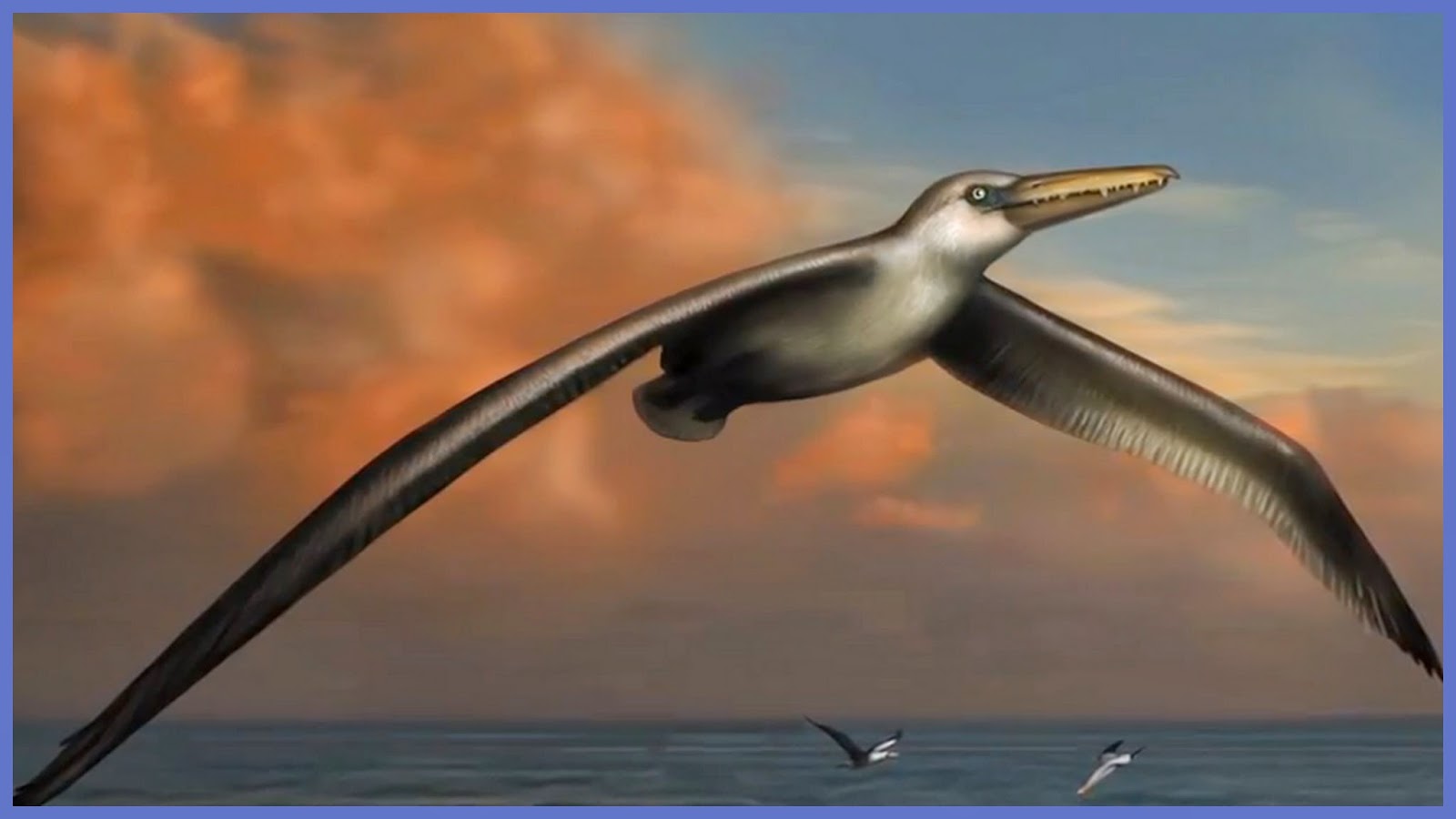FOSSILISED bird bones
uncovered in the US state of South Carolina represent the largest flying bird in
history, with a wingspan of 6.4 metres, according to a new study.
The Pelagornis sandersi’s wings
were twice as long as the biggest modern-day seabird, the royal albatross, said
the research in the Proceedings of the National Academy of Sciences.Coupled with its long beak and sharp bony teeth, the enormous wings likely helped the bird master long periods of gliding over water in search of seafood some 25 to 28 million years ago.
However, the bird might have needed some help getting airborne, given that its wings were simply too long to flap easily from the ground.
Scientists believe it may have made a running start downhill, or used air gusts — much like a hang glider — to make its way aloft.
Once in the air, study author Dan Ksepka of the National Evolutionary Synthesis Center in Durham, North Carolina, said the bird could probably soar for kilometres without ever flapping its wings.
“That’s important in the ocean, where food is patchy,” Dr Ksepka said. P. sandersi lived after the dinosaurs became extinct but before the first humans are known to have inhabited North America.
The bird’s wing and leg bones along with its complete skull were first discovered in 1983 near Charleston, South Carolina, during excavation work for a new international airport.
“The upper wing bone alone was longer than my arm,” said Dr Ksepka, recalling that a backhoe was called in to help unearth the bones.
The bone measurements suggest that the bird’s wingspan was between 6.06 and 7.38 metres, according to the PNAS article.
The previous size record holder was an extinct, six-million-year-old bird found in Argentina, named Argentavis magnificens. Its wingspan was estimated at over 6m.
The fossils of the P. sandersi shed light on the flying ability of a remarkable bird, but also raise new questions about the group of bony toothed seabirds known as pelagornithids, which disappeared some 2.5 million years ago.
These ancient birds were “remarkably efficient fliers” that were found across all seven continents, making “the cause of their ultimate extinction all of the more mysterious,” said the study.
With thanks to The Australian
More here.
Some other related
posts:
Shark-munching Spinosaurus Was First-known Water Dinosaur: Study Shows
Velociraptor: Facts About The 'Speedy Thief'
Two Jurassic Mini Mammal Species Discovered in China
Researchers Say They've Found The Biggest Dinosaur Ever
Tiny Bat Wing Dinosaur Discovered
What Killed The Dinosaurs?
Titanosaurs: The Largest Animals Ever To Walk The Earth
Timurlengia Euotica: The Missing Link to Tyrannosaurus Rex
Archaeopteryx: The Transitional Fossil
When Did The Dinosaurs Become Extinct?
Ancient Sea Monster The First Vegetarian Marine Reptile
Spiclypeus Shipporum: New Dinosaur Species Sported Uniquely Spiked Shield
Timurlengia Euotica: The Missing Link to Tyrannosaurus Rex
Archaeopteryx: The Transitional Fossil
When Did The Dinosaurs Become Extinct?
Ancient Sea Monster The First Vegetarian Marine Reptile
Spiclypeus Shipporum: New Dinosaur Species Sported Uniquely Spiked Shield
T-Rex Cooed With Mouth Wide Shut
Prehistoric Marsupial Lion Was The Size Of A Squirrel
Prehistoric Marsupial Lion Was The Size Of A Squirrel
Jurassic ‘Sea Monster’ From Scottish Loch
Psittacosaurus: Chinese Parrot Lizard Dinosaur First Found To Use Camouflage
Scientists Discover A Mysterious Prehistoric Shark
'Beardog' Discovery Offers Clues As To How Canines Evolved
Savannasaurus Elliottorum: Wide-Hipped Dinosaur the Size of a Bus Once Trod Across Australia
Ancient 400-Pound Salmon Fought With Dagger-Like Teeth
Dinosaur Tail Found Encased In Amber
Psittacosaurus: Chinese Parrot Lizard Dinosaur First Found To Use Camouflage
Scientists Discover A Mysterious Prehistoric Shark
'Beardog' Discovery Offers Clues As To How Canines Evolved
Savannasaurus Elliottorum: Wide-Hipped Dinosaur the Size of a Bus Once Trod Across Australia
Ancient 400-Pound Salmon Fought With Dagger-Like Teeth
Dinosaur Tail Found Encased In Amber
